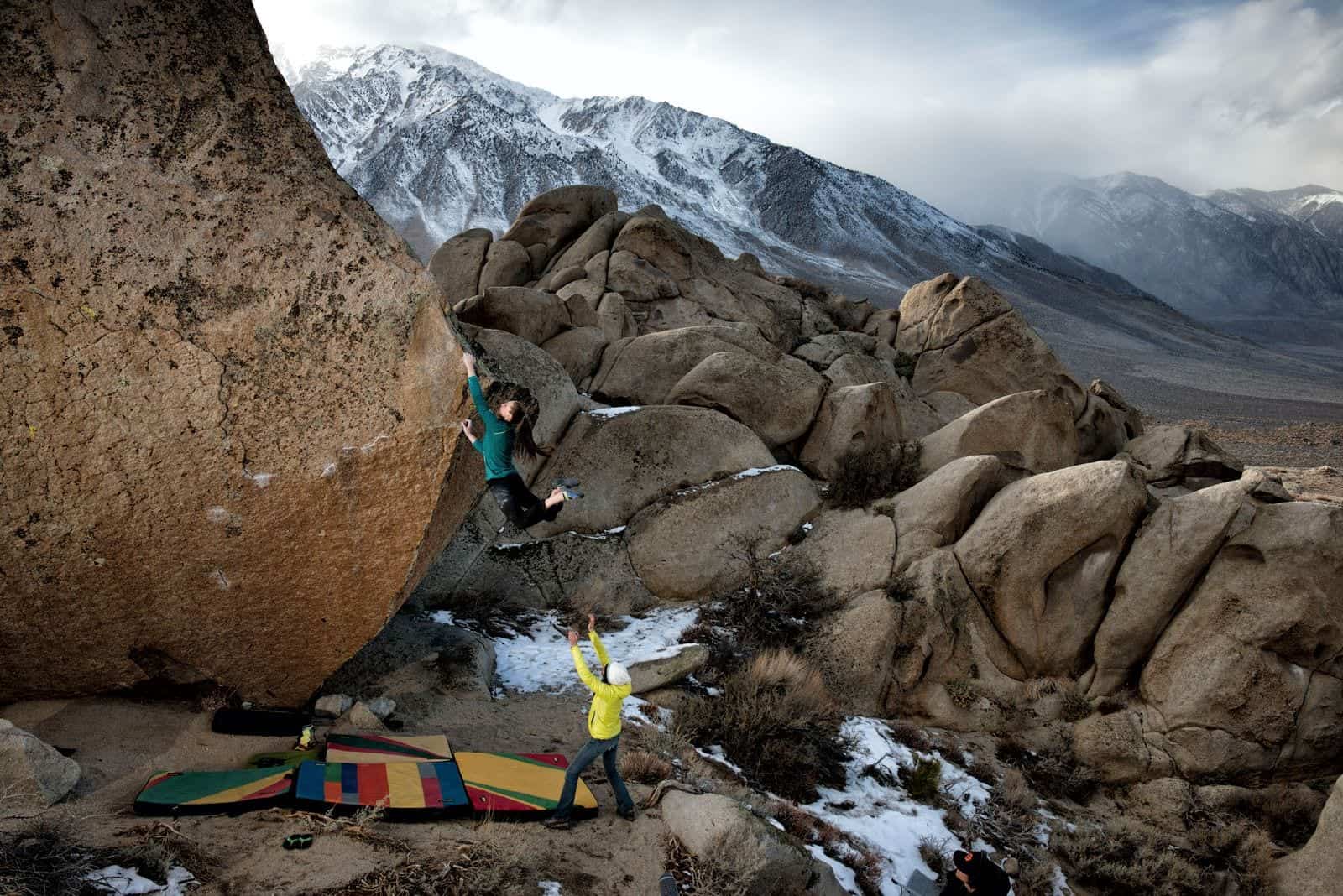The sweat-drenched summer months are behind us, and we’re in the height of Send-it September. With our fingertips no longer leaving visible sweat marks on the rock, Sendtember is a rock-climber’s paradise. Crisp mornings and evenings with typically dry conditions lead to some epic climbing days, all fueled by the invigorating fall air and a strong desire to send it, making up for any missed time on the rock during the sticky summer. But the reality is that not sending happens constantly—in climbing and in many other athletic endeavors. A project could take a climber days, weeks, or even months to actually send.
While we hope you’re finding epic success during Send-it September, we wanted to touch on the reality of not sending and how failure can often feed into long term success, so we talked with Gnarly athletes and rock climbers Alex Johnson and Maiza Lima to discuss just what happens when rock climbers don’t send. “The glimmer of success that we experience is very minute,” Alex said. “But that’s what drives us—that feeling of total euphoria when you do succeed because most of the time it’s failing. Every time you pull into the rock, you could fail.”

Try as we might to always succeed, regardless of our sport, failure is inevitable. Both climbers have experienced the ultimate euphoria of sending it, but they’ve also hit some epic lows. The undeniable reality is that in rock climbing, not sending is gonna happen, and it’s gonna happen repeatedly. What keeps these climbers going when gravity is keeping them down? Alex and Maiza have significantly different climbing backgrounds, but they both agree that not sending it is an integral part of the process of eventually sending.
The constant failure in climbing makes it an exceptionally frustrating and daunting sport. In the best circumstances, not sending serves up a lesson or two on how to improve in the future while still building strength. In the worst, consistent failure can lead to burn-out, injury, and yelling at a tiny foothold at the gym. A positive mentality can be tough to maintain when almost every climb ends abruptly with taking a whipper or face planting into a crash pad.
Take, for example, running a marathon. Months of training goes into the preparation. Blisters, shin splints, figuring out which running shorts don’t hike up your butt, hundreds upon hundreds of miles to prepare, but on race day something goes wrong and your finishing time isn’t what you wanted, but you finish. Alex Johnson trained for her “marathon” for two years, but she wasn’t running, and she didn’t finish. She was training to climb her way into one of the two allotted female slots for Team USA at the Tokyo Olympics. “I poured the last two years of my life into
At 31, Alex is the oldest climber on Team USA by a large margin. Climbing, similar to gymnastics, is an intense sport that demands total body strength. Retirement from competition in these sports often comes when an athlete is in their mid-to-late 20s. “I kind of feel like maybe that was my shot because I’m so much older,” Alex said.
In late August 2020, Maiza posted to her Instagram that she wouldn’t be having a Sendtember — that her body isn’t feeling good on the rock. Despite training hard, she’s struggling to get restorative and regenerative sleep. Insomnia creeps in during the early morning hours for Maiza — a less than ideal situation when crisp early morning temps breathe life back into climber’s blood that has been dormant during the sticky summer months. “I just don’t have that energy anymore because I spend hours through the night fully awake trying to figure out how to sleep again.”
But not sending is something Maiza has dealt with since she started climbing five years ago and it has nothing to do with not sleeping. She’s struggled with a fear of falling, sometimes ending up in tears on the wall and not leading routes during her first few years climbing. Overcoming that fear has been a slow process and something Maiza still deals with today. “I fail a lot, and sometimes I’m not at my best. I allow myself to have those feelings and I share those with the people around because a lot of people go through the same mentality.”

Maiza’s relative newness to climbing has meant that she hasn’t had much time to project routes. While she can dominate a 5.13 route on one type of rock, she’ll fall on a 5.10 that includes less familiar rock and style. Progress is not always linear.
It had been two years since Alex climbed outside when she watched her chance at the Tokyo Olympics disappear. Despite the initial sting, Alex packed up the car with her girlfriend and drove to Las Vegas, met up with friends, and pulled on some real rock. “I was standing in the desert and I was like, ‘Oh, I feel like I’m breathing again.’ It was the best day ever.” And that momentum and invigoration hasn’t stopped.
Alex has countless projects going on. So many that she has a white board to help keep track. With lists of accomplishments and projects still to come, she’s outlined hundreds of outdoor problems that had been ignored while training for comps. On that list is The Swarm, a V13/14 high-ball boulder in Bishop,California. Alex is well acquainted with the route, but hasn’t sent it yet. “My perspective on failure has changed because it’s never really over. There’s always another try or another chance or another competition.”

With that in mind, The Swarm is high up on her list. The white board also serves as a reminder that her climbing accomplishments are epic. It’s a scorecard and date keeper of routes she’s climbed. Once she fills out the entire whiteboard, it will be a route map of 100 V8s, 100 V9s, and 100 V10s she’s climbed. Alex is thrilled to be back climbing outside and writing with dry-erase markers again. She’s climbed all 100 V9s. Only a handful of V8s and V10s remain, as does The Swarm.
Maiza will be climbing this month, regardless of if she finds a top on every route. For her, succeeding on a route is desirable, not essential. “For me, the biggest thing is to have fun outside and share those moments with other people. I just want to make sure I’m having fun and I’m still climbing. I love both of those things more than projecting.”
Maiza still learns from the rock with every fall. Eventually, those lessons form a book with enough information to solve the problem, or in Maiza’s case, climb that 5.11 granite alpine route that didn’t work out last time. “I’m always learning from the rock. There is not one moment that I’m on the rock that I’m not learning something. And then throughout the years, that just builds more and then you see yourself doing things that you’re like, ‘Oh my god. Look how much better I’ve gotten.’”
So enjoy Send-it September with those crunchy leaves underfoot. But like our Gnarly athletes, not sending it in September is totally fine, too. Not sending is part of the process, the building blocks that teach us how to get smarter and stronger. We’re right there with you falling off the rock, taking a slow, deep breath of fall air. And trying again.





